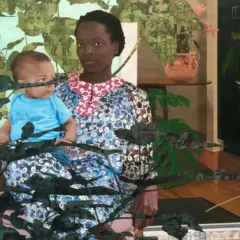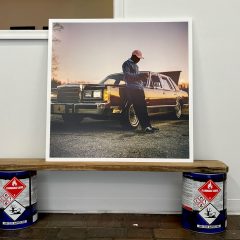[Jennifer visits an eccentric show filled with rescued and repurposed objects, and observes how these collections relate to the issues of gender roles and environmental impact. — the Artblog editors]
Jeffrey Jenkins rescues abandoned and vulnerable things. For example, over the course of four or five years, he salvaged almost 100 decrepit balls that washed up on the banks of the Hudson River. These balls form just one of Jenkins’ many object collections. He also accumulates brushes, frayed and raggedy stuffed animals he calls “Misfits,” and old paint-by-number paintings. Jenkins revives these cast-offs in his art projects, or displays them as sculpture and art in their own right. Both iterations of his amassed items are presented in his current exhibition at The Mildred Complex(ity), a gallery in the small hamlet of Narrowsburg, NY.
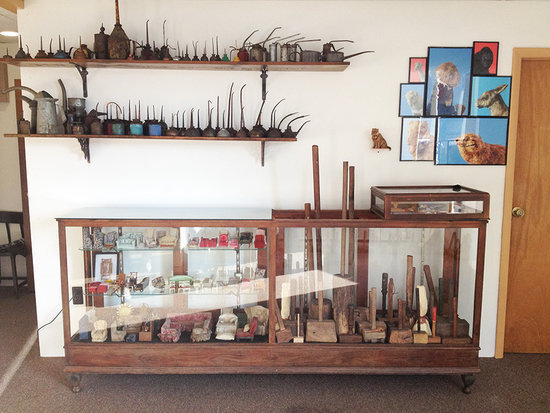
The Mildred Complex(ity) is an outpost of sorts of the larger Mildred’s Lane, home of artist J. Morgan Puett and the site of an inventive artist residency program/communal living project run by both Puett and Mark Dion. Jenkins’ exhibition at the Complex(ity) is a jam-packed, visual delight of stuff. Not only do we glimpse Jenkins’ obsessions with brushes and animals, he’s also curated into the mix Puett’s personal assortment of dollhouse furniture, Dion’s large groupings of mallets and oil cans, and fellow artist Rebecca Purcell’s collection of antique needle cases and pin cushions. There is a lot to look at, and these collections continue to grow. Purcell noted that holiday gift-giving among these four friends always includes items that add to each person’s specific collections.
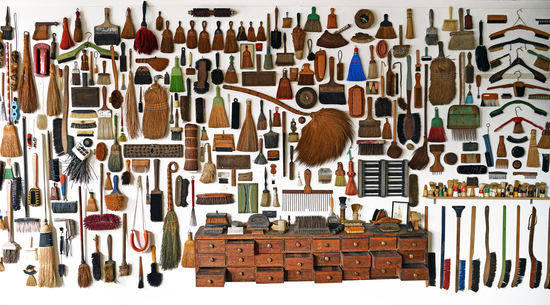
Many of the pieces displayed here are stereotypically gendered. Mark Dion’s mallets and oil cans are objects that, historically, are held by a male hand. Purcell’s and Puett’s collections are typically associated with the female. Jenkins said that Puett’s assortment of doll furniture reflects her strength in creating a sense of place. Indeed, a dollhouse may suggest a diminutive approach to a small world, but it is a site of absolute sovereignty.
The larger community of Mildred’s Lane, The Mildred Complex(ity), and all of the attendant programming and residencies are evidence of Puett’s drive to define what domesticity and making art can be.
Blurred lines between collecting and creating

Jenkins also evoked the vast history of Western collecting in his artist talk at the exhibition opening on New Year’s Eve. He commented on the links between collecting and subjectivity, saying that collecting is both an “activity and a way of interacting with the world.” Jenkins began collecting as a teenager, as an interactive and subjective expression of a Romantic sprit and an interest in Art Nouveau design.
The first brush/broom he bought is long-handled and has the soft, whiplash curves of the Art Nouveau design style. The objects have “the patina of time which reflects the hands that made them and used them,” said Jenkins. They retain a memory of their original, utilitarian purpose, but transition when brought into a new setting or grouping. Rescued from the world of commodity and utility, these objects become something new: something Jenkins describes as “really more sculpture.”
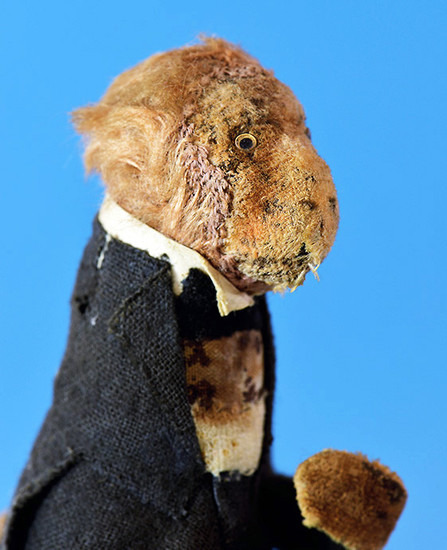
It’s true that these items have sculptural qualities: interesting surfaces and materials, striking shapes. But when arranged en masse as they are here, they become indistinguishable from all the stuff in the many antique shops and junk barns readily found in this region of the Catskills. In this way, the artists may be exploring how barriers between art galleries and vernacular ways of being can be shattered.
Small objects can make a big statement
Some collections stand out uniquely, however. Those ruined balls found on the banks of the Hudson River ultimately became material for Jenkins’ photographic series titled “Hudson Orbitals”. The balls were photographed against a darkened, space-like background and lit in a way that makes them look like planets. When observing the balls, Jenkins noticed that “sunlight gives the balls shape, just as the sun gives our planet and moon shape.” The “Hudson Orbitals” allow us to contemplate the ways that objects can be transformed as they move from one type of commodity to another: art.
Photographic transformation cannot undo the fact that these balls are harbingers of humanity’s ruin due to excessive consumption and waste, but taken on their own, the images propose pure, new worlds yet untouched by commodification.
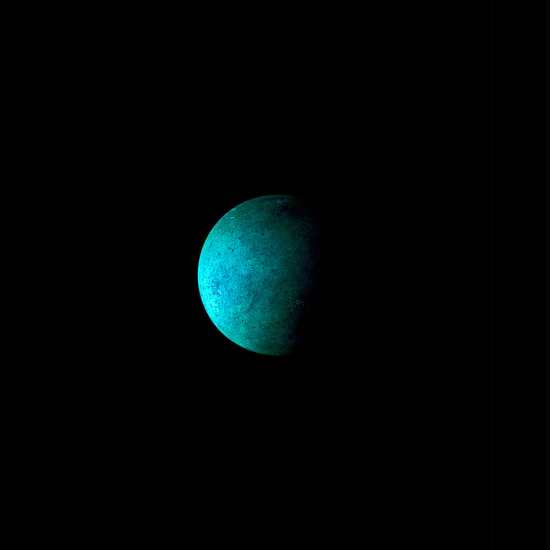
Brushes, Planets, Misfits, and Other Collections is on view at The Mildred Complex(ity), 37 Main Street, Narrowsburg, NY through February 28, 2014.



